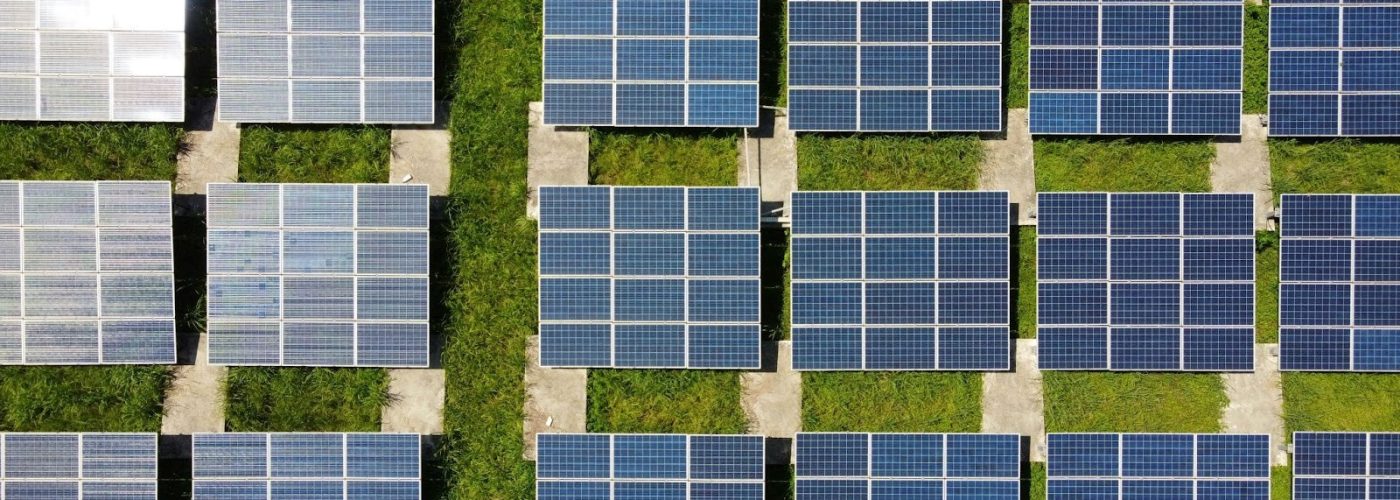Renewable energy adoption is increasing worldwide as businesses are looking to decrease their carbon footprint while simultaneously cutting operational costs. Commercial buildings are at the epicenter of this movement and hold great promise for solar integration. Harnessing solar power aligns perfectly with sustainability objectives while offering long-term financial savings as well. Thanks to advanced technology and design practices, solar is now more accessible than ever, offering unique solutions that transform properties into eco-friendly powerhouses. In this blog, we will look at some of these amazing potentials that can be found on rooftops, car parks, or wherever else it may be utilized.
Solar Rooftop Panels
Rooftop photovoltaic (PV) panels are the standard method for integrating solar energy in commercial buildings, making use of a lot of rooftop space that has previously gone underutilized to generate renewable energy. Modern solar panels have become sleeker, more efficient, and capable of producing significant electricity even during cloudy weather. Giving commercial buildings the ability to offset energy consumption during peak hours, thus significantly lowering electricity bills. Battery storage makes sure power remains available during outages ensuring your operational resilience.
Solar Facades and Building-Integrated Photovoltaics (BIPV)
Buildings that are looking for an aesthetic yet functional solar solution should consider solar facades and BIPV technology as a solution. This revolutionary approach incorporates solar materials directly into the structure of buildings such as walls, windows, or cladding and can generate power while still upholding the architectural integrity and sleek designs of modern commercial spaces. BIPV systems utilize semi-transparent solar glass that lets light flood in while simultaneously moderating heat levels and cutting HVAC energy requirements. Energy production with design brilliance combined.
Solar Carports
Parking spaces often go underutilized, but they provide an opportunity for harnessing solar energy. Solar carports combine shading solutions for vehicles with energy production for a win-win outcome. Beyond their practical function, these installations are scalable and can produce substantial amounts of electricity that can be consumed onsite or used as incentives by employees and customers with electric vehicles (EV). Businesses are even integrating charging stations for EVs onto these solar carports in order to futureproof buildings against rising demand for sustainable transport infrastructure solutions.
Floating Solar Systems
Commercial properties near water bodies such as lakes or reservoirs can benefit from floating solar arrays (or “floatovoltaics”) installed over them, taking advantage of untapped real estate and its cooling effect for maximum energy efficiency. Such floating systems are particularly suitable for properties featuring water treatment plants or irrigation reservoirs, maximising output while minimising land usage.
Solar Canopies and Skylights
Solar canopies and skylights offer a unique way of marrying sustainability with design. Solar canopies can be installed over walkways or outdoor seating areas to generate solar power while also providing shade. Meanwhile, solar skylights combine natural lighting with energy efficiency, cutting back on artificial lighting inside buildings during the daytime. Making this ideal for offices, retail stores or warehouses looking to reduce lighting expenses without sacrificing functionality or design.
Ground-Mounted Solar Farms
Ground-mounted solar farms offer commercial properties with extensive outdoor spaces an economical energy solutions, ideal for businesses that require significant energy output like manufacturing facilities. Ground-mounted systems may incorporate tracking technology that automatically adjusts solar panel angles throughout the day for maximum energy capture. Although they require more space than rooftop systems, their scalability and cost-efficiency make them an attractive solution for energy intensive industries like manufacturing.
Solar Thermal Systems for Heating
Solar isn’t limited to powering your devices. Solar thermal systems harness sunlight as a source of heat, making them an excellent solution for businesses with significant heating needs like hotels, gym facilities and manufacturing plants. By employing collectors to gather sunlight directly through their panels and convert it to hot water or steam for various uses, cutting back on gas use while greening operations simultaneously.
Energy Monitoring and Smart Systems
Optimizing solar installations means incorporating smart energy monitoring systems. These technologies offer businesses real-time information on production, consumption, storage and demand. Advanced systems even optimize power usage based on demand for maximum return from investments in solar. When combined with battery storage solutions such as Gridstore’s smart energy solutions offer energy storage during low demand periods for use during peak periods ensuring seamless and effective energy management strategies.
Leasing and Power Purchase Agreements (PPAs)
Businesses concerned about upfront costs associated with solar installations may find leasing models or PPAs an easier and less-expensive alternative. Under these contracts, third-party providers install and maintain the solar panels while the business agrees to purchase generated power at a set, often lower rate. Eliminating significant capital expenditure while providing predictable energy costs that meet sustainability goals. PPAs are especially helpful for smaller-sized enterprises looking to transition towards green energy without incurring large financial strain.
Policy and Incentive Leverage
Governments and local councils offer numerous incentives, tax breaks, and funding schemes designed to promote renewable energy adoption in commercial settings. Businesses should remain informed about all available financial benefits for solar adoption, such as feed-in tariffs, renewable energy certificates or capital allowances. By taking advantage of these opportunities, companies can reduce the financial burden associated with adopting solar and increase return on investment. Navigating these policies plays a big part of successful financial planning for building managers and owners, so understanding the srec definition and how to utilize them can significantly contribute to the success of commercial solar projects. Renewable energy adoption offers businesses both financial and environmental advantages. By switching to sustainable energies like solar power, businesses can reduce their carbon footprint while contributing to a more sustainable future. This also enhances public perception as environmentally conscious businesses.
Conclusion
Solar energy integration into commercial buildings is more than a passing trend, it’s an extremely important strategy for sustainability and financial efficiency. There are countless approaches, from traditional rooftop systems to innovative approaches like solar facades and floating arrays, that meet various business needs. By exploring both current technologies as well as innovative innovations for solar integration in commercial properties, energy reliance can be significantly reduced, comply with legislative requirements more easily, and pave the way towards a brighter, greener future. The time has come to turn commercial rooftops, facades, and car parks into the power plants of tomorrow.





